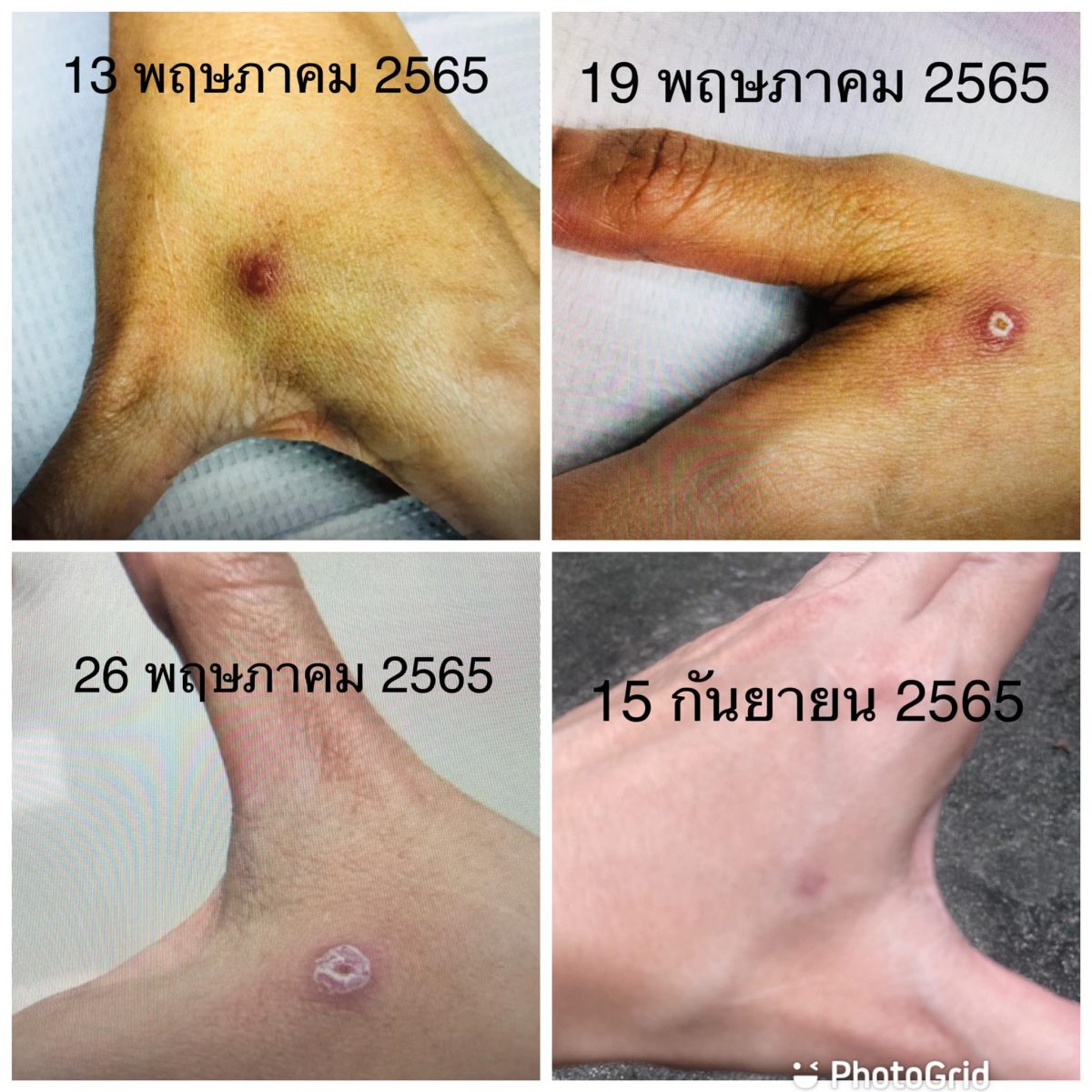During this time, you may be hearing about onychomycosis in cats. That can be transmitted to humans, that is, fungal disease sporothyroidosis. It is caused by a fungus called Sporothrix schenkii.
Sporothrix schenkii is a fungus found in natural habitats such as soil, plants, and bark, distributed throughout the world. This fungus, if it infects the cat’s skin, will infect the deeper layers of the skin. Characteristics of the lesion of Sporotricosis fungal disease a lump on the skin and erupted into a hole

importance in epidemiology
These are fungi that can be transmitted from cat to cat. and can be transmitted from cats to humans In which there have been reports of outbreaks in foreign countries before, such as Malaysia, there have been reports of cat-to-human outbreaks. There is little information about this fungal outbreak in animals in Thailand. In 2018, a study reported a case of sporotricosis in cats in Bangkok, Thailand.
Where does my cat get sporotricosis and what are the symptoms?
Infection is caused by a cat getting Sporothrix fungi through wounded skin. From in the natural environment where this fungus lives, such as in soil or thorns, it pierces the skin until it causes a wound. Fungal infection enters the skin causing the appearance of blisters or lumps spreading on the skin. can be found throughout the body The face, head, and legs of a cat are often the most common. Nodular lesions become inflamed and burst into pits and may be accompanied by a bacterial infection.
This fungus can be found to infect other systems in the body, such as the lymph nodes. Respiratory system Kidney Nervous system Gastrointestinal system But infections in other systems in the body have been reported relatively rarely. This is often found in cats with compromised immune systems and can cause severe and even fatal symptoms.
As for the contact between cats and cats and cats and humans, it can occur through bites. Scratches from infected cats and wounds on the skin, or through contact with open wound lesions or wound secretions, etc.
diagnosis
Your veterinarian will make a diagnosis based on history. Symptoms and lesions detected on the skin It is often found in open-feeding cats due to the potential exposure to Sporothrix in their natural environment. Puncture of skin tissue samples for cytology examination or pathological will be a way to confirm the infection.
treatment
Treatment of sporotricosis An oral fungicide such as Itraconazole will be continued for at least 2 months until the disease is cured. together with the use of fungicides applied externally through the skin
protection
Since this fungus lives in soil, bark or thorns, the prevention is to not expose cats to environments that are at risk of encountering Sporothrix , as well as being careful about biting-scratching or touching secretions or wounds. from cats suffering from this disease If suspected skin lesions are detected Immediately take him to the veterinarian for diagnosis and treatment. which cats will be able to recover from this disease In humans, if you have to care for or come in contact with a cat suffering from this disease, it is recommended to wear gloves every time you touch a sick animal
. Feline fungus, a disease that cat slaves should be careful of (Ringworm)
Article by
Piyawan
Phurahong Piyawun Phurahong , DVM
, Veterinarian at the Feline Clinic Thonglor Animal Hospital
Follow us for great articles on
Facebook : Pets Home and Garden




